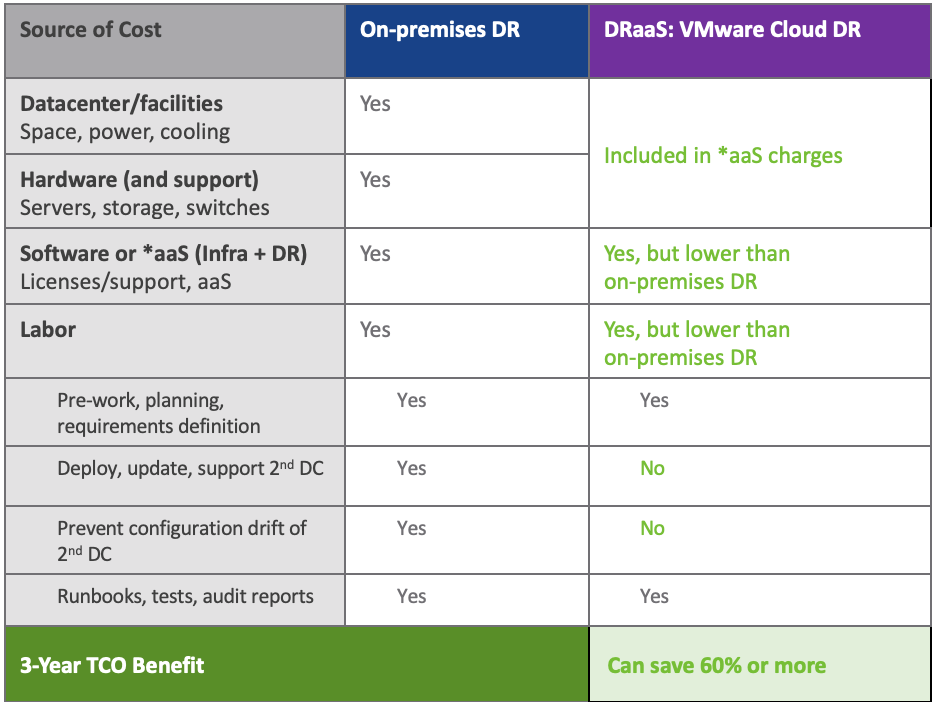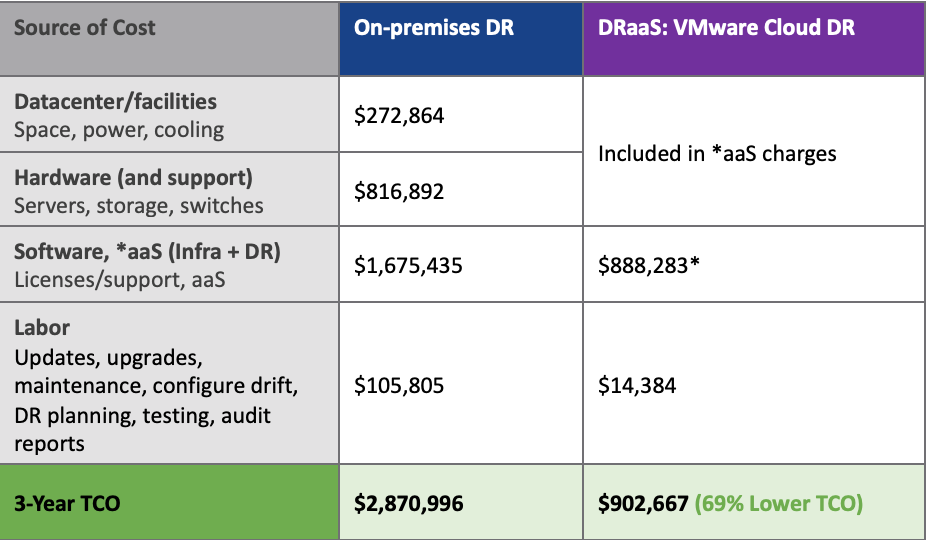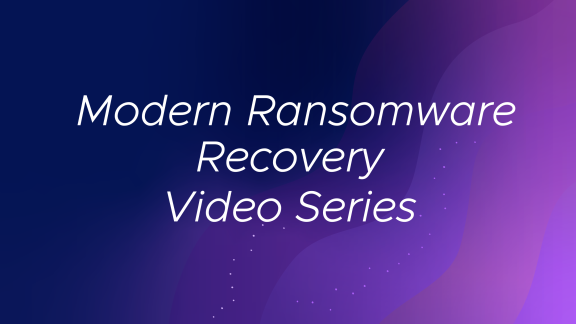Save with VMware Cloud DR!
It may seem odd to talk about Back-to-School in March, but it’s been an odd year as we all know. With a third vaccine now approved in the US, many parents, myself included, are hoping that students can go back to in-person school soon! And a big “THANK YOU!” to all the teachers who have worked tirelessly to help our kids learn this past year. With that, keep reading to learn math that helps you save with VMware Cloud DR!
This talk about back-to-school got me thinking about the “new math” behind DR-as-a-service (DRaaS) and why it can deliver compelling cost savings. The result: Organizations can save 60% or more by using a DRaaS solution, like VMware Cloud Disaster RecoveryTM, compared to the traditional approach of implementing DR on-premises.
Going Back to School on DR Math
Let’s unpack the cost drivers in DR, where DRaaS has unique advantages and where you can save with VMware Cloud DR.
The total cost of ownership for DR includes four main areas:
- Datacenter and facilities for the DR failover. This area includes the physical space for the DR failover capacity as well as the power and cooling for running that facility (and all the hardware housed inside).
- IT hardware (plus its support contracts). This area includes the servers, switches, and storage hardware that provides the DR failover infrastructure.
- IT software, both the infrastructure and DR software (plus its support contracts). Assuming a VMware-based environment, this includes components like vSphere, NSX, vSAN, SRM, and third-party storage-based replication SW if not using vSphere Replication. We won’t include OS and application licensing costs since that is needed for both on-premises DR and DRaaS, and therefore is usually a wash.
- Labor. There are multiple subcategories here. Some of them are required regardless of whether we’re talking about on-premises DR or DRaaS (such as DR pre-work/planning, defining DR runbooks, and conducting DR tests). But other labor costs only apply to the on-premises model, such as the cost to deploy, update, support, prevent configuration drift of the secondary DR datacenter.
Table 1 shows where DRaaS gets its compelling cost savings. At the macro-level, it comes down to not having to pay for and maintain the second datacenter. First, the data center/facilities, hardware, and software licensing and support contract costs are all included in the DRaaS charges, which comes out lower compared to on-premises costs. Second, your IT teams no longer need to spend valuable time to deploy, update, support, and manage the configuration drift of the second datacenter because VMware does all of that as part of operating the DRaaS solution.

Table 1: TCO Comparison Categories of On-premises DR to DRaaS
Let’s look at a real customer scenario that came across my desk last month (Table 2). The customer was looking to protect 290 VMs with 74 TB of used storage, ~1000 vCPUs, and 4400 GBs of allocated vRAM. Using list price for VMware on-premises software and VMware Cloud Disaster Recovery, as well as mainstream estimates for data center facilities, hardware, and labor costs, the math for this customer results in a potential 69% 3-year TCO savings with VMware Cloud Disaster Recovery.

Acing Your Next DR Test
Yes, VMware Cloud Disaster Recovery delivers these TCO benefits. But what’s even more valuable is that it boosts confidence in your DR solution in a world where ransomware attacks are accelerating (a prediction that there will be a ransomware attack on businesses every 11 seconds by 2021[1]), freak climate-related events are becoming more normal (2019-2020 Australia wildfires, 2020 California wildfires, 2021 polar vortex storms in Texas to name some recent ones), and all the while digital transformation has accelerated, making many more IT applications business-critical, and hence in need of DR protection. As part of the solution itself, VMware Cloud Disaster Recovery has automated DR health checks that run every 30 minutes, automated data integrity checks that run daily, non-disruptive testing capabilities, immutable snapshots, and support for failover AND failback workflows. Second, because it’s SaaS-based, there’s a dedicated team of DR experts running the service 24×7 in the cloud, and you get the benefits of new enhancements (including bug fixes) as soon as the code is rolled into production – no more waiting for time to do an on-premises upgrade.
Putting Your New DRaaS Math Skills to Work
Next steps that you can take today to save with VMware Cloud DR.
- Estimate the DR TCO savings for your organization with the VMware Cloud DR TCO Calculator
- Check out the Gartner report “How to Determine If DRaaS Will Save Money[2]” that we’ve made available for you. In addition to independent analysts’ perspective on the merits and other considerations of DRaaS, it also provides a framework to do your own evaluation.
- Watch VMware Cloud Disaster Recovery in action with these demo videos. And for extra credit, take the Hands-on-Lab.
Learn about VMware Cloud Disaster Recovery and contact your VMware salesperson or partner to evaluate it for your specific business needs. You can ask about its capabilities and how it can help you modernize and optimize your DR plans
[1] Cybersecurity Ventures, Ransomware Is A Real Pain In The Wallet, Steve Morgan, 24 November 2020
[2] Gartner, How to Determine If DRaaS Will Save Money, Jeffrey Hewitt, Rob Blair, 29 September 2020
GARTNER is a registered trademark and service mark of Gartner, Inc. and/or its affiliates in the U.S. and internationally, and is used herein with permission. All rights reserved.





